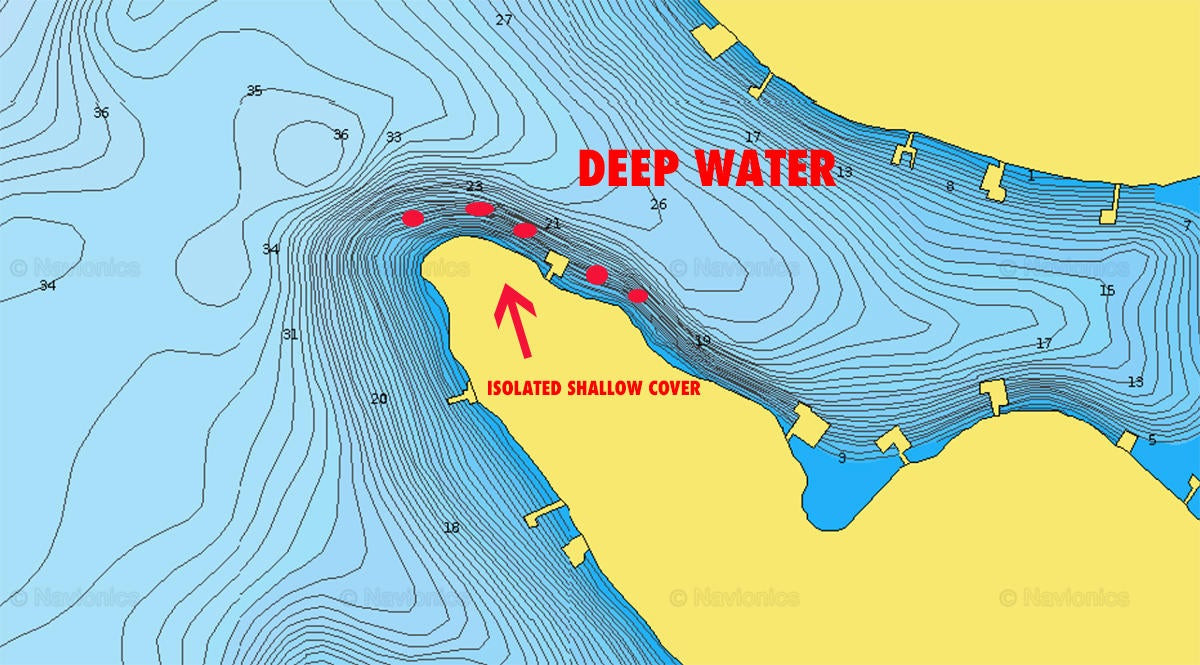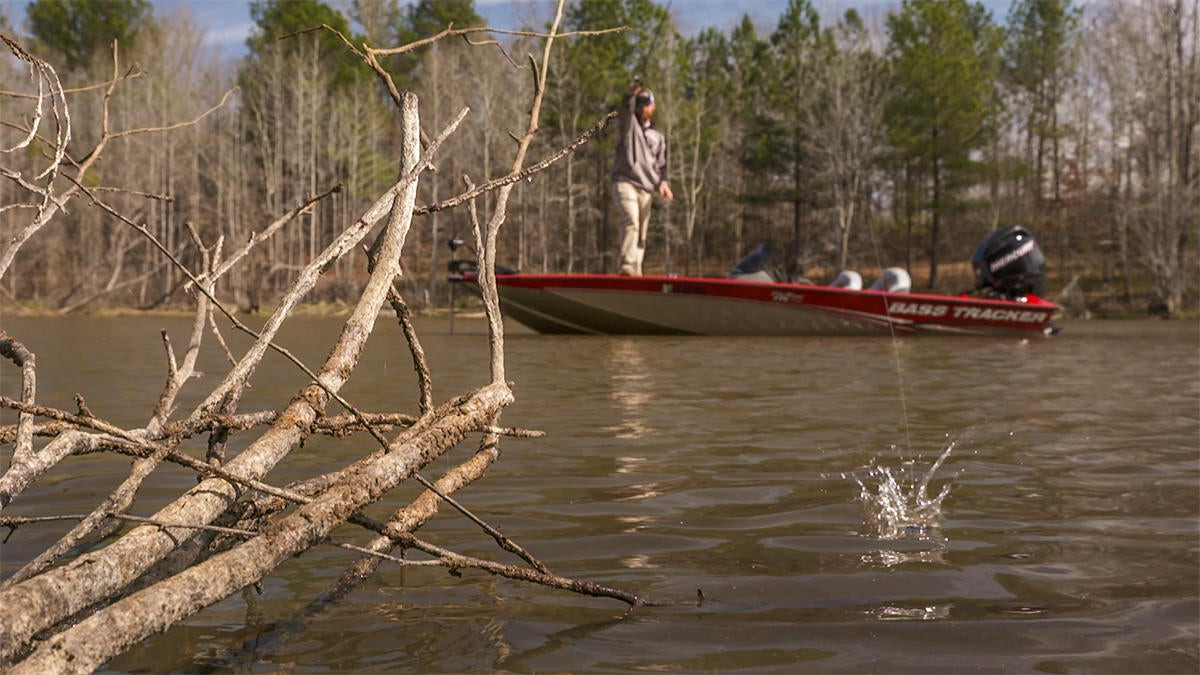I’m willing to bet that most of your boat ramps aren’t very busy right now. My local boat ramp, which is usually packed to its capacity on the weekends, looks like a desert lately; it wouldn’t surprise me to see some tumbleweeds blowing through the dang thing. Although a lot of anglers are in the duck blind or deer stand this time of year, a lot of guys also aren’t fishing because it’s just flat-out tough.
Fall fishing can frustrate even the best and most experienced anglers. Just look at the recent Elite Series weights – it took 31 pounds, 4 ounces over a four-day tournament to crack the top 10 at the renowned Chickamauga Lake just last week. If my math is correct, that’s less than 8 pounds per day.
That ain’t good, man.
The primary complaint you’ll hear about fall bass fishing revolves around the prevalence of small fish. When the shad migrate to the backs of creeks and bays this time of year, the bass aren’t far behind. I’ve had days where we caught over 70 fish by following the bait and taking advantage of this annual migration. But heck, I doubt we caught anything over 2 1/2 pounds.
So I changed my strategy the last couple of years. I quit chasing schoolers. I quit worrying about the presence of bait so much. And I quit doing the same thing and expecting different results. Instead, I started targeting shallow, isolated cover adjacent to deep water. I began catching bigger fish almost immediately.

What’s the big deal about deep water?
Big bass don’t grow big by being dumb. As a bass ages, it begins to change its habits and becomes more aware of its surrounding environment. Those big females are very well aware that there’s a shad migration happening. But the older and more ornery they become, they have absolutely zero interest in fighting hundreds of small bass for an insignificant meal. Why would they burn a bunch of calories chasing tiny chicken nuggets when they could sit next to a stump, expend very little energy and practically have a steak (bluegill) delivered to them?
This is why I started targeting shallow, isolated cover with adjacent deep water. Big bass like to “own” a piece of cover. They’ll let the youngsters battle it out in the backs of creeks. If they can find some shallow cover next to deep water, they’ll live there for most, if not the entire year.
Deep water is much more important in the fall than some may think. As the water cools, older bass know that cold fronts are going to happen and they need a way to quickly and easily adjust to these abrupt changes in weather. Nearby deep water allows them to do just that.
On those warmer fall afternoons, that big ol’ bass can snug up next to that stump in just a few feet of water and be perfectly content. When a cold snap happens, however, all that bass has to do is kick its tail a time or two and it’s in 15 feet of water. Again, older bass love efficiency and that’s what shallow cover with adjacent deep water offers them. They can hang out and pick off passing bluegill when the weather’s nice and they can slide out to deeper water to wait out a cold front… all while exerting very little energy.

The grossly overlooked fall spawn
As the calendar gets closer to November and December, it’s imperative to keep a close eye out for a fall spawn. The large majority of anglers would tell you that bass only spawn in the spring, but that’s simply not true. According to nationally renowned fisheries biologist Steven Bardin, it’s much more common than you’d think, especially with Florida-genetic bass. And guess what? Florida-genetic bass are becoming increasingly prevalent throughout the country.
“We all know that the spawn starts in the spring,” Bardin said. “Those bass will come to bed when the water temperatures reach around 65 degrees. The largest females spawn first, but they don’t drop all of their eggs initially. They only drop 50 percent of their eggs at first. They they’ll leave that bed and find another bed about a month later. Then they’ll do it a third time.
“When summer rolls around, they start producing eggs for the next year. If we have a fall with a prolonged warm stretch, those eggs will ripen and they’ll go ahead and spawn. You’ll see this more often in low bass-density fisheries when competition is low. So when a one- or two-week warm snap occurs and combines with low density, you’ll see a lot of fall spawning.”
For the longevity of the hatched fry, this fall spawn has its pros and cons.
“When a bass spawns early, such as in the late fall, their fry will be bigger when all of the other bass spawn in the spring,” Bardin said. “That fry will be nearly 3 inches and now it can outcompete the spring fry and even eat them. On the other hand, however, a big female with great genetics can spawn in the fall and then a cold front comes and kills all of the fry. It’s a risky proposition.”
Bardin also notes that if the water is below 70 degrees during the fall and it suddenly spikes above the 70-degree mark for a week or two, a fall spawn will often be triggered. This doesn’t mean you need to go look in dirt-shallow water like you would in the spring, though. Fall spawning activity tends to occur in-you guessed it-shallow areas with adjacent deep water.
This explanation makes a lot of sense to me. I caught the biggest bass of my life, a 13.14-pounder, on November 2, 2017 in two feet of water. I had no idea about the fall spawn at that point, to be honest. The water was a little dirty and I was mindlessly flipping a creature bait at the same limb for about 10 minutes while I was having a conversation with a buddy. After countless flips, I felt a little “tick” at the end of my line and it was game-on.
Bardin isn’t just a biologist source for Wired2fish; he’s also a friend of mine. So I called him after I caught and released the 13-pounder and he asked me what the weather had been like. I told him it was too warm that week to deer hunt, so I went fishing instead. He simply replied with, “Yep, she was on bed. You caught a fall spawner.”
I went back and looked at the video of the catch and all of the pictures and sure enough, her tail was bloody and she looked like she was slap-full of eggs. She was also just a few yards from 15 feet of water. Although I didn’t mean to catch her, it was a real eye opener to me. That fish catch changed my approach to fall fishing.

Commit to it
This isn’t something you can just try once and give up on. When you don’t get a bite for a few hours, you’re going to be very tempted to bail out and go chase schoolers. Resist that urge the best you can. While you’re not going to catch dozens of fish targeting shallow cover with adjacent deep water, you’ll have a much better chance of catching an absolute giant.
I never thought I’d catch a 13-pounder in November of all months, but the same thing could absolutely happen for you if you stick with this strategy.












